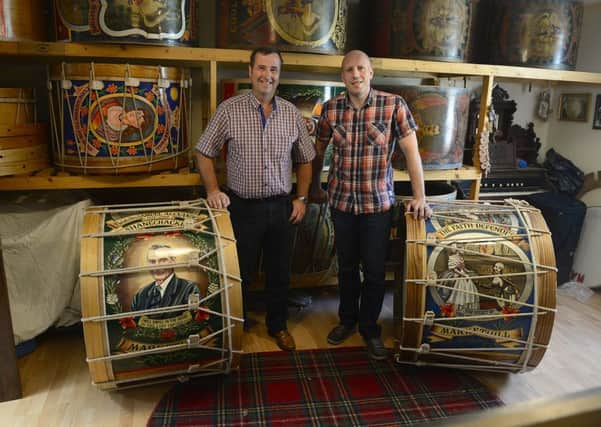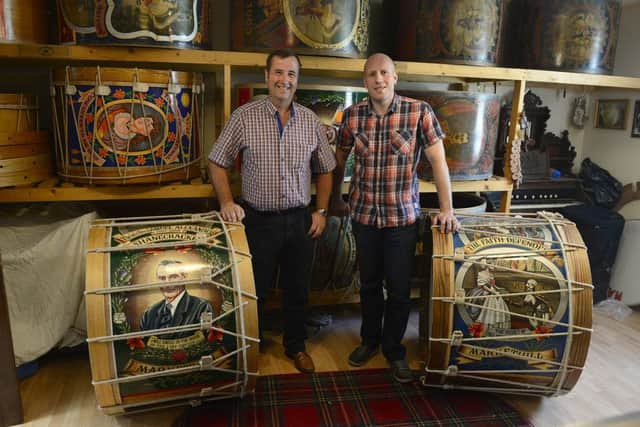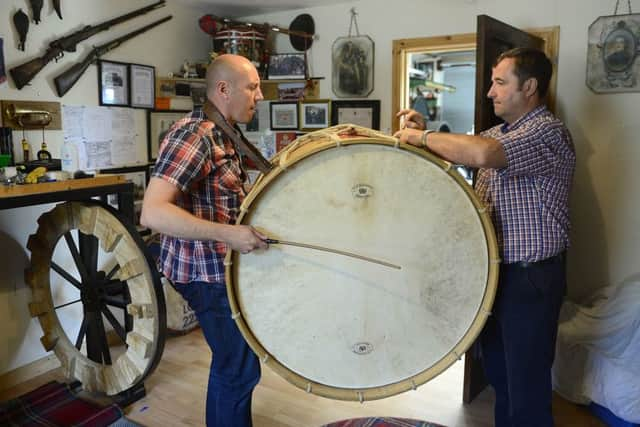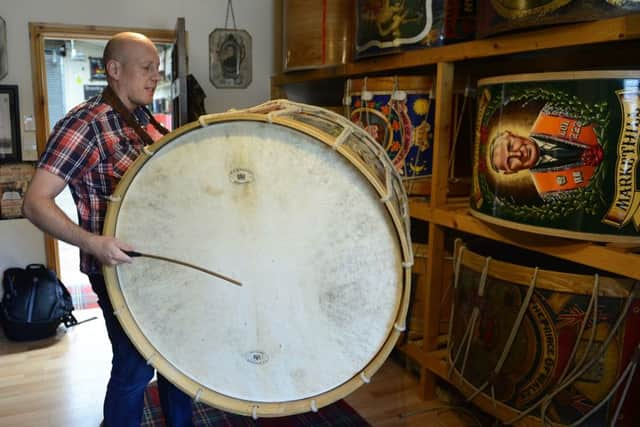WATCH: Learning the art of the Lambeg drum


One is often told to never judge a man until you have walked a mile in his shoes.
Based on my experience last week, I never want to walk a mile in the shoes of a Lambeg drummer.
Advertisement
Hide AdAdvertisement
Hide AdOn Friday past I was invited to the home of Orangeman David Alexander in Markethill and given a quick drumming tutorial ahead of the Twelfth – arguably the biggest day of the year for Lambegs.


What I will say is that those stick-wielding Lambeg men who account for their fair share of decibels on the Twelfth make their chosen instrument look easy. Before David’s lesson, I thought – how hard can this be?
Very hard was the answer. Not only do I have no apparent rhythm, but after just five minutes of drumming, serious questions were being raised about my endurance.
I found myself hunching lower and lower under the weight of the drum measuring three metres in diameter and weighing between 45 and 50 pounds. Unusually I wished for the some extra weight around my midriff to help support this vast instrument of percussion.
Advertisement
Hide AdAdvertisement
Hide AdDavid suggested going to the gym to build up my shoulder and neck muscles. I was too embarrassed to tell him I already do. Like my Lambeg training, my gym training also appeared to be wilting under scrutiny.


At least the noise didn’t bother me.
In terms of the art of thumping a Lambeg, David gave the following tips: “You need to hit them hard. You need to really give it to them.
“They give out around 120 decibels. Before you play it the drum needs to be tightened to breaking point.
“There’s a tonne of pressure at each head. It’s only because of the wee air holes in it that stops it from blowing up.”


Advertisement
Hide AdAdvertisement
Hide AdConcerning the weight of the drum, he said: “I sent one over to a professor in America who collects musical instruments. I posted it over to him. He wrote back to me and asked me if he could have another of the special ones that you can walk behind. When I explained that the version he had was the same as the ones people carried on the Twelfth he thought we were mad.”
What makes the Lambeg drum unique is that its heads are made of goat’s skin – no other animals can make the same pitch, David explained.
“The goat must be skinned in the proper way for it to fit on,” he said. “Whenever a head comes fresh you see the veins in the skin, it’s like a road map.
“The more you drum the whiter it becomes. You always drum at a right angle to the backbone.”
Advertisement
Hide AdAdvertisement
Hide AdBefore the skins are fitted, the drum has to be expertly shaped by craftsmen like David: “I steam the wood so I can bend it into a cylinder. Some of the older drums are made from one continuous plank, but nowadays you’ll use an oak plank, split it and open it out so both halves are even.
“They have to be even for the drum to sound the same.”
After the wooden hoops – usually made from ash – and the drum heads have been fitted, the drums can be loosened and tightened using ropes called buffs.
The finishing touches are added to the Lambeg by skilled painters. David said: “They used to use oils but it’s mostly acrylics now. William McGowan in Garvagh and Andy Young of Richhill would be the main painters.”
David pointed to one of his drums dating back to the 1800s: “Look how much detail is in that face. If you saw it across the street you wouldn’t look at it twice. You need to be close to see the workmanship that has gone into them.
Advertisement
Hide AdAdvertisement
Hide Ad“All the Lambeg drums have a story to tell. That’s what makes them unique.”
You can see at each stage of the process the pride people have taken in their role – the woodworker, the goat skinner, the painter, and finally the drummers themselves.
David said: “We drum 12 months of the year in competitions up and down the country but most people see them just as a Twelfth drum. It goes under the radar for most of the year.
“There’s a lot of young ones learning it now – going back to the fife as well, going back to the old ways.
Advertisement
Hide AdAdvertisement
Hide Ad“I drummed from I was a child. I started making them around 20 years ago. I made one dedicated to my father after he died in 2002.
“It’s more glamorous to play the drum than it is to be in a shed making it, but that suits old boys like me. I’m too old to be playing it now. It’s a young man’s job. I had my day of that too. I’m 53 now, though in my head I’m still 18.”
My final lesson of the day concerned what to do with an old Lambeg.
“The drums aren’t just used for drumming,” said David. “I could take you to dozens of people round here who learned to walk on one. It was used it as a play pen.
“People used to use old drums to rear hens in. You can’t use a square boxes because some would go in the corners and get squashed.”